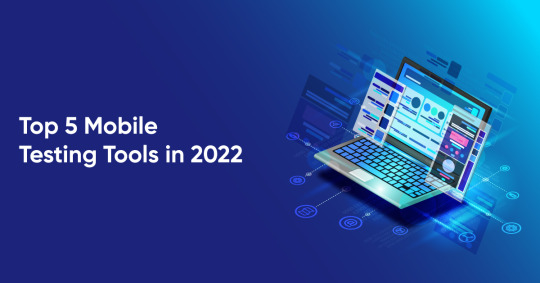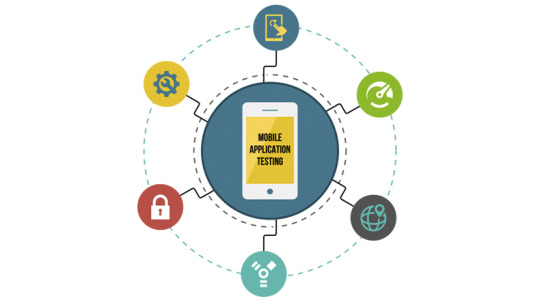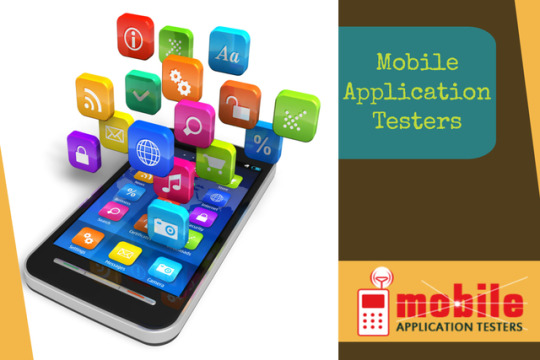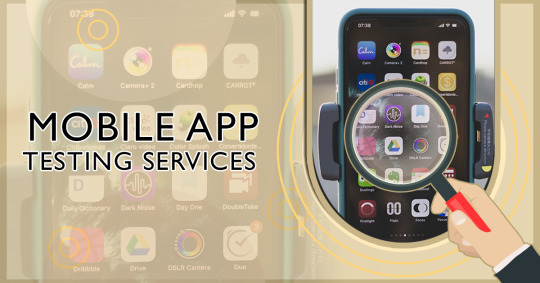#MobileApplicationTesting
Explore tagged Tumblr posts
Text
Mobile Application Products: Understanding Size, Share, and Growth Trajectories
The global mobile application market size is anticipated to reach USD 626.39 billion by 2030, exhibiting a CAGR of 14.3% from 2024 to 2030, according to a new report by Grand View Research, Inc. This growth is primarily attributed to the growing emphasis on maintaining a healthier lifestyle and the increasing demand for real-time access to health-related data, aiding users in managing their health, fitness routines, nutritional intake, and various physical activities. Moreover, factors such as declining internet costs, widespread smartphone adoption, rising disposable incomes, and the consequent surge in in-app purchases, particularly in the gaming sector, collectively contribute to driving market expansion.

Mobile Application Market Report Highlights
The market is expected to experience significant expansion in the foreseeable future, driven by the widespread adoption of smartphones, increased internet accessibility, and the rising utilization of machine learning and artificial intelligence technologies within mobile applications (apps).
The Apple store segment accounted for the largest revenue share in 2023, owing to a higher monetization rate of iOS apps for revenue gained from premium apps and in-app purchases
The music & entertainment application segment is projected to exhibit significant growth during the forecast period from 2024 to 2030, owing to an increase in demand for live-streaming apps such as Netflix, YouTube, and Instagram
The Asia Pacific is expected to emerge as the fastest-growing regional market given the potential the region holds in terms of internet penetration and smartphone adoption. India and China are anticipated to remain the major markets, offering strong growth opportunities to all participants across the mobile application ecosystem.
For More Details or Sample Copy please visit link @: Mobile Application Market Report
Furthermore, there has been a surge in the adoption of on-demand live video consultation apps globally during the COVID-19 pandemic. While remote consultation services had been growing steadily in recent years, the onset of lockdowns led to a sudden increase in demand for live video consultations. This spike can be attributed to the negative impact of the pandemic on individuals' mental health and anxiety levels, caused by restrictions on movement and the fear of contracting the virus during in-person visits. Consequently, online consultation services experienced significant growth. The user-friendly interfaces and remote health monitoring capabilities offered by mobile applications have further fueled the uptake of healthcare apps for seeking medical advice and consultations.
In addition to gaming and healthcare apps, music and entertainment apps also present promising opportunities for revenue generation. The increasing demand for live streaming apps is anticipated to drive growth in the music and entertainment apps market. Platforms such as Netflix, YouTube, and Instagram offer live-streaming capabilities, allowing users to broadcast to a wider audience. These apps have gained popularity among content creators and social media influencers, who engage with their audiences regularly, enhancing the visibility and ranking of their channels and profiles.
Moreover, the global lockdowns imposed in response to the COVID-19 pandemic have positively impacted the growth of over-the-top (OTT) applications, as people seek entertainment options during leisure time. Consequently, there has been a significant increase in the average time spent on OTT apps during the pandemic, leading to a surge in demand for entertainment applications. However, as governments gradually reopen economies following the containment of the pandemic, it is anticipated that the year-on-year growth rate in the entertainment app segment will return to normal levels.
List of Major Companies in the Mobile Application Market
Apple Inc.,
Google LLC
Microsoft Corporation
Amazon Inc.
Gameloft SE
Netflix Inc.
Practo
Cure.fit
Ubisoft Entertainment
Xiaomi Corp.
#MobileApplicationMarket#MobileApps#MobileAppDevelopment#MobileApplicationDesign#MobileApplicationTesting#MobileApplicationTypes#BusinessMobileApps#EnterpriseMobileApplication#MobileAppDevelopmentPlatforms#MobilePhoneApps#HybridMobileApps
0 notes
Text
Unlocking Success with Comprehensive Mobile App Testing Techniques
In today's digital age, mobile applications have become an integral part of our daily lives, serving as essential tools for communication, productivity, entertainment, and more. As the demand for mobile apps continues to soar, ensuring their quality, reliability, and performance has become paramount for businesses seeking to thrive in the competitive app market. Comprehensive mobile app testing techniques play a crucial role in achieving these objectives, allowing organizations to deliver exceptional user experiences and unlock success in the mobile app landscape.
Mobile app testing encompasses a wide range of activities aimed at evaluating the functionality, usability, performance, and security of mobile applications across various devices, platforms, and network environments. To effectively test mobile apps, organizations must employ a combination of manual and automated testing techniques, leveraging the right set of tools and frameworks tailored to their specific testing requirements.
Manual testing remains an essential component of mobile app testing, allowing testers to perform hands-on evaluation of the app's functionality, user interface, and overall user experience. Manual testing involves executing test cases on real devices or emulators to identify bugs, glitches, and usability issues that may impact the app's performance. Testers also conduct exploratory testing to uncover unforeseen issues and validate the app's behavior under different usage scenarios.
In addition to manual testing, mobile app automation has emerged as a critical strategy for accelerating testing processes, improving test coverage, and enhancing overall testing efficiency. Automation enables organizations to execute repetitive test cases, regression tests, and performance tests with greater speed and precision, reducing the time and effort required for testing. By leveraging automation frameworks such as Appium, XCTest, and Espresso, organizations can automate various aspects of mobile app testing, including functional testing, UI testing, and performance testing, across multiple platforms and devices.
Moreover, mobile testing tools play a vital role in facilitating efficient and effective mobile app testing processes. These tools provide features such as device emulation, test script creation, test execution, and result analysis, empowering testers to conduct comprehensive testing in a controlled environment. Popular mobile testing tools include Appium, Selenium, TestComplete, and Ranorex, each offering unique capabilities and functionalities to meet the diverse needs of mobile app testing.
In conclusion, unlocking success with comprehensive mobile app testing techniques requires organizations to adopt a holistic approach that combines manual and automated testing strategies, leverages the right set of tools and frameworks, and prioritizes the quality and performance of mobile applications. By investing in robust testing practices and staying abreast of emerging trends and technologies in the mobile app testing landscape, organizations can deliver high-quality mobile apps that delight users and drive business success.
#mobileapptesting#testmobileapp#qamobiletesting#mobileapplicationtesting#mobiletestingtools#mobileapptestingtools#mobileappautomation
0 notes
Text

0 notes
Text
Stages in the App Development Process.
There are a few distinct stages in the app development process that you should be familiar with. These incorporate testing, mockups, wireframes, and work process outlines. To properly plan for the project you want to develop, it is essential to be aware of these.
Workflow diagrams.
Workflow diagrams are used to depict a specific business's processes. Additionally, they may be of assistance in pointing out potential stumbling blocks and areas for improvement.
Work process outlines can be made with a basic drawing program or a product instrument. An attachment system in some tools lets users connect their documentation to stages on the diagram.
The process will determine the kind of workflow that you need to describe. A brief list of roles and responsibilities may suffice for some processes. Others require more inside and out data. You can get the information you need by collaborating with stakeholders.
You can begin creating a diagram as soon as you have selected the procedure that you want to document. Tasks are typically depicted as boxes or diamonds. The start and end points of the process can be represented by ovals.
You ought to likewise consider the sorts of activities expected to finish each stage. Arrows can be used to show how different actions relate to one another.
Wireframes.
Start a mobile app project off right with wireframes. They give a reasonable image of what an application will resemble, and they permit fashioners to prepare.
Sketching out ideas is the basic process. Using online tools or pen and paper, these sketches can be made. Users of some of these tools can also link wireframes.
Additionally, wireframes are a great method for verifying a mobile app's functionality. This can assist in determining whether an application can accomplish its goals. It can also be a tool that developers can use to learn what a user might want from an app.
Obtaining feedback from customers is yet another excellent use of wireframes. A quick and effective way to get feedback on the app is to present the user with a wireframe of the final product.
Consequently, you can make adjustments and enhancements before writing the code. By avoiding costly changes in the future, you can benefit from this.

Mockups.
Test designs and gets a good idea of how the finished product will look with mockups. Additionally, they are useful for identifying issues before coding. For instance, on the off chance that a client sees a pixelated picture, the individual in question could think something isn't working as expected. This kind of testing can help you save money by not having to redo the finished product.
A static image of a mid-to high-fidelity that helps you get a feel for the finished product is called a mockup. It typically includes images from the finished product and placeholder data. However, it lacks some functionality and is not as polished as the live website.
Utilizing the appropriate tools is essential to get the most out of a mockup. One of the most famous instruments is Sketch. Adobe XD and Mockplus are two additional tools.
There are several steps involved in making a good mockup. To begin, you must determine the purpose of your app. The next step is to design an appealing yet functional interface. Last but not least, you must offer your customers sample content.
Testing.
Any mobile app developer must have a robust testing procedure. This aids in early bug detection and reduces costs. To determine whether an app works as expected, app testers conduct UI, functional, and performance tests.
The costs of testing your app will be affected by the platform and operating system it is launched on. The screen resolution, processing power, and form factor of some devices vary. To ensure compatibility, it is essential to test your app on as many platforms as possible.
You can evaluate your app's functionality by testing it on emulators. However, the best accuracy comes from testing on actual devices.
The two primary types of testing are: automated and manual. A human tester is used in manual testing. Nonetheless, this demands a ton of investment and assets. Automating these tests is frequently the most cost-effective approach for testing.
Security tests are also part of testing, which includes testing on a variety of devices. These checks guarantee that your app is protected against malicious attacks.
#app development#mobile app development#mobileappdevelopers#app developers#app developing company#mobile software#mobile app developer company#mobile application services#mobile applications software#mobile application development#mobileapplicationtesting
0 notes
Photo

Get affordable & best professional mobile app development services with standard quality. We offer comprehensive mobile app development services covering every aspect ranging from design and prototyping to development, testing, app launch, and updates.
For more information and a free quote contact us at-
➡️Website: www.proponenttechnologies.com
➡️Mail: [email protected]
➡️Contact no.: +91-9410771660
0 notes
Text
TEST AUTOMATION TOOLKIT
👉 Our team has traditional tools and new technologies in web application testing (Selenium, Protractor, Ranorex, Jmeter, Postman, Visual Studio, Load Runner, etc.), mobile application testing (Appium, Espresso), security testing, test automation, Infrastructure (Ansible, Puppet, CI / CD tools), test management and bug tracking software (JIRA, Bugzilla, etc.).

#testautomationtoolkit#newtechnologies#webapplication#selenium#protractor#ranorex#jmeter#postman#visualstudio#loadrunner#mobileapplicationtesting#appium#espresso#securitytesting
0 notes
Text
How to Prevent Client-Side Injection Attacks

Mobile applications have become the new on-the-go touchpoints for users to browse the internet for information and execute various other activities. This has made mobile applications the new frontier for cybercriminals to let loose malicious codes and seek critical personal or business data. According to the Ponemon Institute, an IT firm dedicated to security-related research, about 59% of respondents reported an increase in malware attacks. Also, the mobile security report by Check Point Research unearthed the following statistics for 2021:
97% of business enterprises or organizations faced threats from multiple attack vectors
46% of enterprises had one employee download a malicious application
40% of mobile devices globally are vulnerable to cyberattacks
It is only by employing a multi-pronged approach to mobile testing that business enterprises can protect their critical data from cybercriminals. The focus areas for such enterprises ought to include fostering application security, planning a defense strategy, upholding security policies, and securing the database layer and physical devices. This calls for implementing mobile application testing to protect the app from multiple threat vectors, especially injection attacks. Let us discuss how client-side injection attacks can be prevented by rigorously testing mobile applications.
What is an injection attack and its types?
An injection attack is all about introducing or injecting a malicious code into the network, thereby allowing the attacker to fetch information from the database. According to the OWASP, this type of attack is the number one application security risk. Here, the malicious code introduced into the software can change its execution by forcing it to execute certain commands. These attacks can impact the computer infrastructure of the affected business negatively and lead to a denial of service. An injection attack takes place due to the inherent vulnerabilities in the application code that allow users to give invalidated inputs. Examples include Cross-site Scripting (XSS), SQL Injection, Code Injection, Command Injection, CCS Injection, SMTP/IMAP Command Injection, LDAP Injection, Email Header Injection, or Host Header Injection, among others.
Risks of injection type attacks
The potential risks carried by these injection attacks include:
Database getting corrupted
Theft, breach, or loss of data
Theft of information through phishing
Loss of productivity due to system downtime
Loss of consumer trust and brand equity
Strategies to launch injection attacks
Cybercriminals have a host of strategies up their sleeves to launch injection attacks like the ones mentioned below:
Inputting interpreted content directly to give commands to an interpreter.
Creating buffer overflows by entering out-of-range values.
Leaving blank fields to create errors.
Using a man-in-the-middle attack strategy, responses from a web service are modified.
Entering data through Near Field Communication (NFC), Bluetooth, and others.
Ways to detect an injection attack
The ideal and easiest way to detect an injection attack is by running an automated web vulnerability scanner. Similar to a pentest tool, this scanner can readily detect attack vectors and allow businesses to protect their applications. As a tool for mobile app security testing, the scanner helps plug the vulnerabilities before they are exploited by cybercriminals.
How to prevent client-side injection attacks
To prevent client-side injection attacks on web applications, businesses must code the application securely. The various mobile application testing strategies include:
Validation of user inputs is done by creating a list of valid statements. Also, configure inputs by context for user data.
Use statements comprising parameterized queries to differentiate between user input and code. This mobile application testing approach helps the system understand commands and statements separately, instead of mistaking the two.
Use of procedures defined and present in the database and called by the application.
Disallow string concatenation by limiting the use of special characters.
Use the last resort measure to escape all inputs given by the users.
Minimize the attack area of the application by removing all unnecessary functionalities. If these features had existed, they would have had to be guarded at all times.
Allow privileges that are important for an account, thereby ensuring strict access.
Conclusion
The sensitive and business-critical information of clients and their end customers’ needs to be protected on several fronts. User input validation as part of mobile application testing should be enforced strictly as users cannot always be expected to enter legitimate data. This can significantly reduce the possibility of injection attacks through the user interface. However, care must be taken to guard against other risks as well, by hiring mobile testing services.
Resource
James Daniel is a software Tech enthusiastic & works at Cigniti Technologies. I'm having a great understanding of today's software testing quality that yields strong results and always happy to create valuable content & share thoughts.
Article Source: dev.to
#mobileapplicationtesting#mobileappsecuritytesting#mobiletesting#mobiletestingservices#testingmobileapplications
0 notes
Text
What are the 5 Best Mobile Testing Tools for 2022?

Mobiles have become the go-to device for scores of users when it comes to accessing online platforms to derive a host of products, services, or information. The plethora of apps available for users across domains comes to a whopping 2.87 million in 2022 (source: Buildfire.com), and the whole app ecosystem costs around $170 billion (source: Forbes). With so much riding for the mobile apps, there are security concerns galore. These include the risk of data leakage, phishing attacks, network spoofing, unsecured Wi-Fi, broken cryptography, spyware, and improper session handling, among others. It is not without reason that business enterprises are queuing up to implement mobile application testing in their value chain. Mobile test automation using mobile testing tools is the best way to validate the efficacy of mobile apps in terms of functionality, performance, security, and usability, among others.
How to select the appropriate mobile testing tools
The success of any mobile application testing strategy is underpinned by the type, quality, and coverage of mobile testing tools used. Let us know the key features of 5 best mobile testing tools for your business:
Easy to learn and use.
Features cover key mobile-specific testing activities.
Native integration with CI/CD systems and/or other platforms.
Provide both scripted and scriptless processes.
Types of mobile app testing
There are several types of mobile app testing as discussed below:
Functional testing: It checks the functionalities of a mobile application as per pre-defined specifications.
Memory testing: Checks the optimized memory usage by the application.
Performance testing: Checks performances related to the application, server, and network.
Interruption testing: Checks for interruptions while the application is in use. The interruptions can be in the form of incoming calls, low memory, incoming SMSs, and low battery, among others.
Installation testing: Checks whether the application can be installed, updated, or uninstalled easily.
Usability testing: In this type of mobile automated testing, the efficiency and effectiveness of the application when used by end-users in real-time are tested.
The top 5 mobile testing tools in 2022
The top five mobile testing tools for Android, iOS, and Windows platforms are mentioned below:
1. TestComplete: Developed by SmartBear Software, TestComplete allows the creation and execution of mobile test automation for Android, Windows, and iOS applications.
Key highlights
Develops and executes robust UI tests for both native and hybrid mobile apps on Android, Windows, and iOS devices.
Automates UI tests on virtual machines, real mobiles, or emulators.
Uses script-free recording and replay activities to create test scripts.
2. Katalon Studio: It is an all-encompassing tool for testing mobile applications and does not entail building a mobile application testing framework from scratch. Katalon Studio is compatible with many operating systems - iOS, Android, Linux, and Windows.
Key highlights
Built-in keywords, record and playback, and templates to create test cases quickly.
Easy toggle using manual and script mode for scripting and low-code options.
Conducts testing on real devices, emulators, or cloud-based devices for remote, local, and cross environments.
Locates and captures visual elements through image-based testing.
Speeds up troubleshooting with an advanced reporting mechanism.
3. Appium: As a well-known mobile application testing framework, Appium inherits the popularity of Selenium and allows the testing of hybrid, native, and mobile web applications.
Key highlights
The scripting languages used are Python, Java, JavaScript, Ruby, and C#.
Easy for testers working with Selenium.
Easy to integrate with other testing platforms and frameworks.
Eliminates the need to recompile other codebase, applications, or frameworks.
Allows re-usability of tests and code across operating systems.
4. Robotium: Allows mobile test automation for Android v1.6+ apps both hybrid and native. It requires the presence of JDK Ready, Android Development Kit, Eclipse, and Android SDK.
Key highlights
Quick test creation using a simple API.
Java is the available scripting language.
Allows test execution on real devices and emulators.
Allows the writing of system, functional, and user acceptance tests.
Supports CI/CD integration.
5. Flutter: Developed by Google to create and test mobile and web applications, Flutter has gained popularity among developers and testers.
Key highlights
Allows easy alteration and update of code on real devices, emulators, and simulators.
Allows background caching using service workers.
Allows the creation of expressive UIs using rich motion APIs, widgets, among others.
Conclusion
The right mobile application testing methodology can help QA teams to automate tests quickly and efficiently. However, while choosing the best framework or tool to write test scripts, focus on the key specifications or features offered. A robust mobile testing solution should be compatible with various mobile platforms, programming languages, and cross-platform integrations. It is advisable to start a project with features such as built-in keywords, record and playback, pre-made templates, and advanced reporting, among others.
Resource
James Daniel is a software Tech enthusiastic & works at Cigniti Technologies. I'm having a great understanding of today's software testing quality that yields strong results and always happy to create valuable content & share thoughts.
Article Source: dev.to
0 notes
Photo

One of the most important factors influencing your client conversion rate is the responsiveness of your site or application. ETG assists customers to identify performance issues early on in development and deliver responsive user experience.
https://www.etggs.com/services/qa-testing/performance-testing/
#mobiletesting#mobileappstesting#mobileapplicationtesting#hybridmobileapps#nativemobileapps#automationtesting#performancetesting#qa#qualityassurance#etg
0 notes
Text
App Testing India | Eqanim Tech

Eqanim Tech is a leading application testing agency has expertise in delivering apps testing solutions. We use advanced testing techniques to provide a perfect application for our reputable customers. We are the best app testing India. contact us on +91 95458 41122.
0 notes
Text
Mobile Application Testing Services in India | Eqanim Tech

Eqanim Tech offers mobile app testing services for your android / iOS apps, assuring you produce high-quality experiences to every client on every device globally. Eqanim Tech provides Mobile App Testing services in India to test the functionality and performance of your mobile app with industries most experience Mobile App Testers.
#apptestingindia#mobileapplicationtestingservicesinindia#applicationtestingcompanyinindia#applicationtestingindia#mobileapplicationtesting
0 notes
Text
Learn Best Practices For Testing Mobile Applications
The demand for testing mobile applications has grown complex following the quick development of the telecom sector. Daily latest mobiles are introduced with various operating systems, a class of hardware specifications, and wide-ranging software apps.
Various third-party applications fit with superior mobile phone versions are also revealed. All these emphasized by concern for performance and user acceptance need reliable mobile application testing
Methods for Testing Mobile Applications
An accurate perception of applications put for testing is a necessity. Check whether it is produced in-house or by the third party. For in-house software, mobile testing should be operated concurrently during the development method. For third-party apps, a comprehensive review of the structure, update frequency, security, function, stress, and support options is required.
Mobile app testing is required to monitor all device feature specifications for GPS, Bluetooth, Wi-FI, games, and others. Their performance, convenience, and security viewpoint must be recognized and verified clearly. The center should remain on what type of platforms the application is meant for, what are high-risk operations, and who are the targeted audience.

Kinds of Mobile Application Testing
Functional Testing: Mobile app testing measures the functionality of the software and its alliance with the device, OS platforms, and technology. It looks into the adaptability issues, designed functional results, and the capability to offer users a comfortable experience.
Usability Testing: Carried on from a customer prospect, this kind of mobile application testing tests if it is simple to understand and manage the application, enables a pleasant experience, how it varies from other forms in the business, and it serves the OS specifications designed for.
Performance Testing: This testing is offered to distinguish queries associated with the network, display, speed and significance, graphical interface, power utilization, etc., that influence performance. All conditions are described, and alterations are marked.
Security Testing: All penetration and firewall problems are classified out to assure that no one can access information on your device while using an appropriate application.
Crash-Free Testing: This allows one to check the determination of the application and the capacity to take the load. Testing specialists also check if its consequences on other forms are pointing to bad user experience.
Peer Testing: This mobile app testing is performed in a real-time environment, and associates are confronted with attaining out drawbacks.
Platform Diversity: The ever-growing diversity of mobiles in configuration, screen size, design, and operating system calls for mobile app testing astute experiences and expertise. An application must be widely tested for its flexibility and comprehensive functionality on all platforms.
Rapid Technological Changes: Fast-changing mobile technology professes a challenge for mobile application testing specialists. The older technology is growing antiquated rapidly, and new platforms are organized by competing companies swiftly. Testing specialists need to update their experience and abilities efficiently in the changing situation.
Cost Vs. Skill: Soaring competition in the business calls for low cost and high-quality mobile app testing services. Balancing expense with the particular technical and expertise specifications need keenness on the portion of testing companies.
0 notes
Photo

Mobile Application Testers provides application testing services inculcating manual and automation testers. It is an all-in-one testing platform providing wide range covering almost all browsers, mobile operating systems, simulators, emulators and even thousands of real devices. It also provides free and open source EDI using Bots transfer.
1 note
·
View note
Photo

Launch fully tested and cross-platform compatible apps with our comprehensive mobile app testing services. We are also continuously building test automation frameworks to support mobile test automation. Know more at- http://apptestingexperts.com/mobile_app_testing/
0 notes
Link

#mobiledevices#mobileapplicationtesting#Mobileapps#ios#Android#WindowsMobile#VerveSystems#Mobileappdevelopmentcompany
0 notes
Photo

Ensure product quality with ETG test automation services for Native & Hybrid Mobile Apps
Get Free Consultation: https://www.etggs.com/services/qa-testing/mobile-application-testing/
0 notes